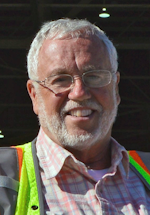Croatia Airlines (OU) fits well with the theme of this issue. Founded in 1989, it is 27 years old and its fleet numbers just 12 aircraft (i.e. 39), two A320s, four A319s, and six Dash 8-Q400s. But it bears the same kind of watching as others in the under 40 category as it owns and operates Croatia Airlines Technical Services, an MRO facility that in 2016 will complete its 200th third-party C-check.
For 25 years it has partnered with Lufthansa Technik and has operated its own heavy maintenance facility for the past 15 years. In addition, the unit does line maintenance at seven airports in Croatia as well as Sarajevo and Skopje, performing routine and ad-hoc maintenance at all locations.
Diverse Client Base
Its clients are a cross-section of European airlines as well as carriers from as far away as South America. With a staff of 234, including the line station personnel, it offers heavy structural inspections and repairs, modifications, landing gear replacement, engine replacement, no damage history (NDH) inspections, and cabin refurbishing and reconfiguring. To support these activities, it has the following shops: composite repair, paint restoration, sheet metal, interior repair, battery, and wheel.
The facility consists of three maintenance hangars with the oldest being a former German structure dating to the post-war period, the second constructed in 2008, and the third, an inflatable structure of Croatian design that was added in 2015. Croatia Airlines owns all the land on which the facility operates at Zagreb airport and therefore has the ability and intention to extend the recently added third hangar and construct yet a fourth hangar in the medium term. Additional structures house the aforementioned shops. It does not engage in engine maintenance - that is done by a foreign partner.
It has no long-term contracts but the facility is fully booked each year during the winter season, from October to April with both its own and third-party work. During the high summer season many of the staff are on holiday and in advanced training. Others are deployed to Croatian coastal airports to deal with the vastly increased demand for line maintenance. During the summer over 100 airlines, scheduled and charter, bring vacationers to the nation’s Adriatic coast and few staff balk at the opportunity to be temporarily reassigned to these seaside locations.
And a School
It has also established a technical training center that provides a range of courses in both basic maintenance and refresher courses, delivered according to EASA Part 66/Part 147 requirements. The first class graduated in 2015 and the center has begun accepting foreign participants as well. With the global growth of aviation and the increased need for qualified staff, the center helps to meet the demand for both its own staff and those who will move to other providers.
The fourth component of the group is an engineering services unit that offers an assortment of technical and logistic services.
Content with Their Mission
Despite the group’s success, it intends to stay within the business parameters that have been established: base and line maintenance. It has no desire to add an engine group as the current arrangement with Lufthansa works well and is cost effective. Nor does it plan to move into avionics. As it grows, it would like to add additional workshops and expand the materials department. Being a major regional player adds significantly to the bottom line at Croatia Airlines and makes this under-40 unit worth watching.
Ron Kuhlmann has spent his entire life in the aviation industry. Beginning with a 30-year career at Swissair, he moved to an aviation consulting firm which eventually was absorbed by Unisys Transportation. He has written for numerous aviation publications and has been a speaker at industry events, including being the keynote speaker for Lufthansa Systems' global meeting in Berlin.




